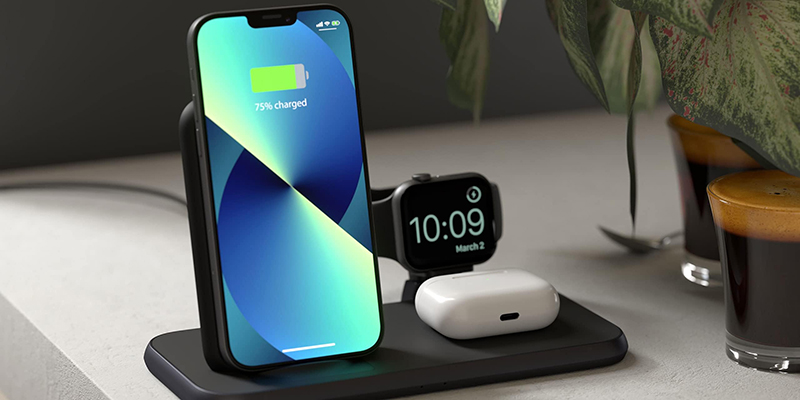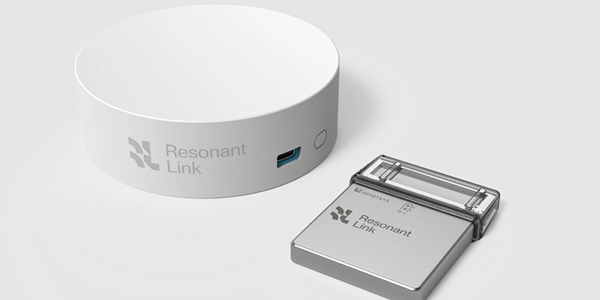What Is Wireless Charging, And How Does It Work?
Let me tell you about some magic. Picture setting your phone down on a little pad and seeing it charge without plugging in a single wire. No more wiring mess, no more looking for the proper port. This is wireless charging, and it's transforming the way we power our devices.

I first experienced it a few years back when my friend thrust her phone into my hands and said, “Just put it here.” I was doubtful — how could it function without a cable? But it did. Now, I couldn’t imagine going back. Let’s take a closer look at what wireless charging is, how it works, and why it’s becoming an essential part of our tech-filled lives.
How Exactly Do Wireless Chargers Work? The Science Behind The Device
Wireless charging relies on electromagnetic induction. Think of it this way: When you set your phone on a charging pad, it generates an invisible magnetic field. Your phone's coil picks up this energy and converts it into electricity for the battery. It's like a magnet pulling a paperclip through the air without touching it—the energy travels through it.
Here Is a Step-By-Step Breakdown:
The Charging Pad is the flat part on which you lay your device. Coiled inside, it has a wire (called a transmitter) connected to an electrical source. When you plug this pad, the electricity runs through this coil.
The Magnetic Field: The electricity flowing through the pad's coil creates a magnetic field around it. This field is safe and only triggers when a device is closed.
Your Device's Coil: Inside your phone (headphones or smartwatch) is a second coil (the receiver). It "catches" the energy near the pad's magnetic field.
The receiver coil converts the magnetic energy back into electrical energy, which in turn charges your device's batterydevice's battery.
This process is why alignment is essential. If your phone doesn't sit in the middle of the pad, the coils probably won't match up and charging won't begin. Some newer pads have multiple coils to address this, but most still need a little precision.
Why Wireless Charging Sounds Like The Future
Wireless charging is pretty darn convenient. It seemed like magic, but it's been science for over a century. And no doubt Nikola Tesla was monkeying around with wireless power in the 1890s, but it took decades before the tech shrank enough for our phones. Today, it's ubiquitous — from coffee shops to cars.
The biggest perk? Convenience. No more fumbling with cords in the dark. Just place your phone on the pad and go. It's also a better option for your device. Maybe plugging and unplugging a cable thousands of times wears out the ports, but wireless charging removes that whole step. Devices can also be made more water-resistant since there are no exposed ports.
But it's not perfect. Wireless charging is slower than wired solutions, mainly if you use power-hungry devices. If the phone is dead, you may still have to deal with a cable to get the thing up and running quickly. Another obstruction is efficiency—some energy is wasted as heat, so your phone can feel warm as it charges.
Wireless Charging: Other Places You Can Use It — Beyond Your Phone
Wireless charging is not limited to smartphones. I’ve seen it in:
Earbuds: Apple's AirPods and Samsung's Galaxy Buds pop into their cases and charge wirelessly.
Smartwatches: Apple Watch and Galaxy Watch chargers are magnetic.
Laptops: Some high-end models, such as Dell's Latitude series, support wireless charging.
Electric Toothbrushes: These have been using wireless charging for years — place the brush on the stand.
Even cars are going electric. Seniors are also being tested with charging pads, which you can park over and charge your EV. You won't even have to plug the vehicle in. Imagine if you never forget to charge your car overnight.
Here Are The Two Primary Types Of Wireless Charging:
Not all wireless charging is created equal. There are two main methods:
Inductive Charging
This is the most common type. It needs very close contact when the device and charger are nearby (such as your phone on a pad). It's efficient but short-lived—ideally, a few millimetres.
Resonant Charging
This newer technique offers the advantage of charging over slightly longer distances (up to several centimetres in length). It uses "resonant" frequencies to transmit energy, so you don't have to align your device perfectly. This was tested in some Starbucks stores, where customers only needed to place a phone on a table to charge it.

There's even discussion of "on-the-air" charging, which could charge devices from across a room via radio waves or infrared light. Some companies, such as Energous and Xiaomi, are developing it, but it's not practical for everyday use.
Pro Tips For Wireless Charging Use
If you’re a wireless charging novice, here’s what I learned:
Check Compatibility: Not all devices support it. Look for "Qi" certification (the industry standard) on your phone or charger.
Take Off Thick Cases: Metal or bulky cases may interfere with the magnetic field. Slim cases are usually delicate.
Steer Clear of Heat: Don't leave your phone on a charger for days—it can get too hot. Unplug it once it's fully charged.
Buy a Good Pad: Cheaper chargers may be slow or get too hot. Brands such as Belkin and Anker are safe bets.
The Environmental Angle: Is Wireless Charging More Eco-Friendly?
This surprised me. At first glance, wireless charging looks wasteful—it consumes more energy than wired charging due to efficiency losses. But look ahead: fewer cables mean less e-waste. One pad can charge several devices over the years and significantly lower the consumption of disposable chargers. As technology advances, energy loss is decreasing.
What’s In Store For Wireless Charging?
The future is exciting. When you walk into a room, your phone, earbuds and tablet charge without using pads. Or motorways that dynamically charge electric vehicles as they traverse them. Other companies are also working on "reverse wireless charging," allowing your phone to charge other devices, such as a smartwatch or earbuds.
Embracing The Future Of Power
Wireless charging isn't merely a gimmick—it's a vision of a future that's also a future of energy without effort. It's not there yet, but it gets faster, more innovative, and more common every year. To me, it's about simplicity. Say goodbye to cable clutter and broken ports. Just place, charge, and go.
As this technology expands, it will fundamentally alter how we design devices, cars, and homes. A day may come when "plugging in" seems as antiquated as dial-up internet. Until then, I'm keeping my charging pad exactly where I need it—next to my bed—in case my life needs to be powered up with minimal hassle.